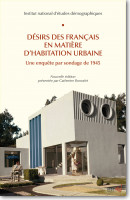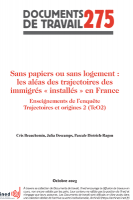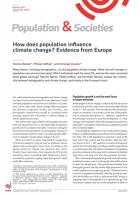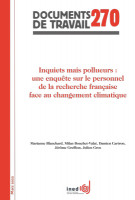
Désirs des Français en matière d’habitation urbaine
Une enquête par sondage de 1945. Nouvelle édition présentée par Catherine Bonvalet
Collection : Études et enquêtes historiques
2019, 128 pagesPreface to the new edition, Catherine Bonvalet
Introduction
Organization of the survey
Outline
I. External arrangements
1. Single-family home or apartment house?
2. The single-family home
3. The apartment house
4. External appearance
5. Windows
II. Indoor layout
1. Room layout
2. The kitchen
3. Hygiene and laundry
4. Outbuildings
5. Heating
6. Floors and wall surfaces
III. Housing expenses
1. Owner or renter?
2. Proportion of income to be spent on rent
3. Comfort and additional expenses
Conclusion
[What the French aspired to in urban housing in 1945] (new edition)
First published in 1947, this work is based on a survey of 2,500 French people done in 1945 in the context of post-war reconstruction. It offers a full view of what the population aspired to in the way of housing arrangements and comfort immediately after the war. This re-edition offers a useful tool for analyzing a major historical turning point in twentieth-century housing development in France.
The survey was ordered as part of post-war research by the country’s Délégation Générale à l’Équipement National [ministerial delegation on national infrastructure]. It reflects the government’s wish to integrate the French people and their preferences into its vast housing renovation program, a plan whose focus on modernity is readily understood in light of the devastating impact of the war.
This was the start of the Trente Glorieuses, a 30-year period of economic growth, and the outset of a period of government planning that would lead to modernizing infrastructure and industry in France on an unprecedented scale. In the next few years, the annual “Housekeeping arts” trade show became a major event; avid for modernity, the French flocked to the show.
The book is organized into two main sections—external arrangements and indoor layout—and the new edition is an opportunity not only to study the survey methodology—the survey was organized by two great names in French sociology, Jean Stoetzel and Alain Girard—but also to examine the findings in greater detail thanks to a number of contemporaneous architectural drawings and analyses.
The presentation by Catherine Bonvalet, a specialist of housing and regional issues in France, offers valuable perspective on the 75-year-old survey. Depending on their generation, French readers will find something of their family history here: parents’ and grandparents’ aspirations for modern amenities, the trace of places alive in French memories, major developments in public hygiene, and the democratization of comfort and modernity.








